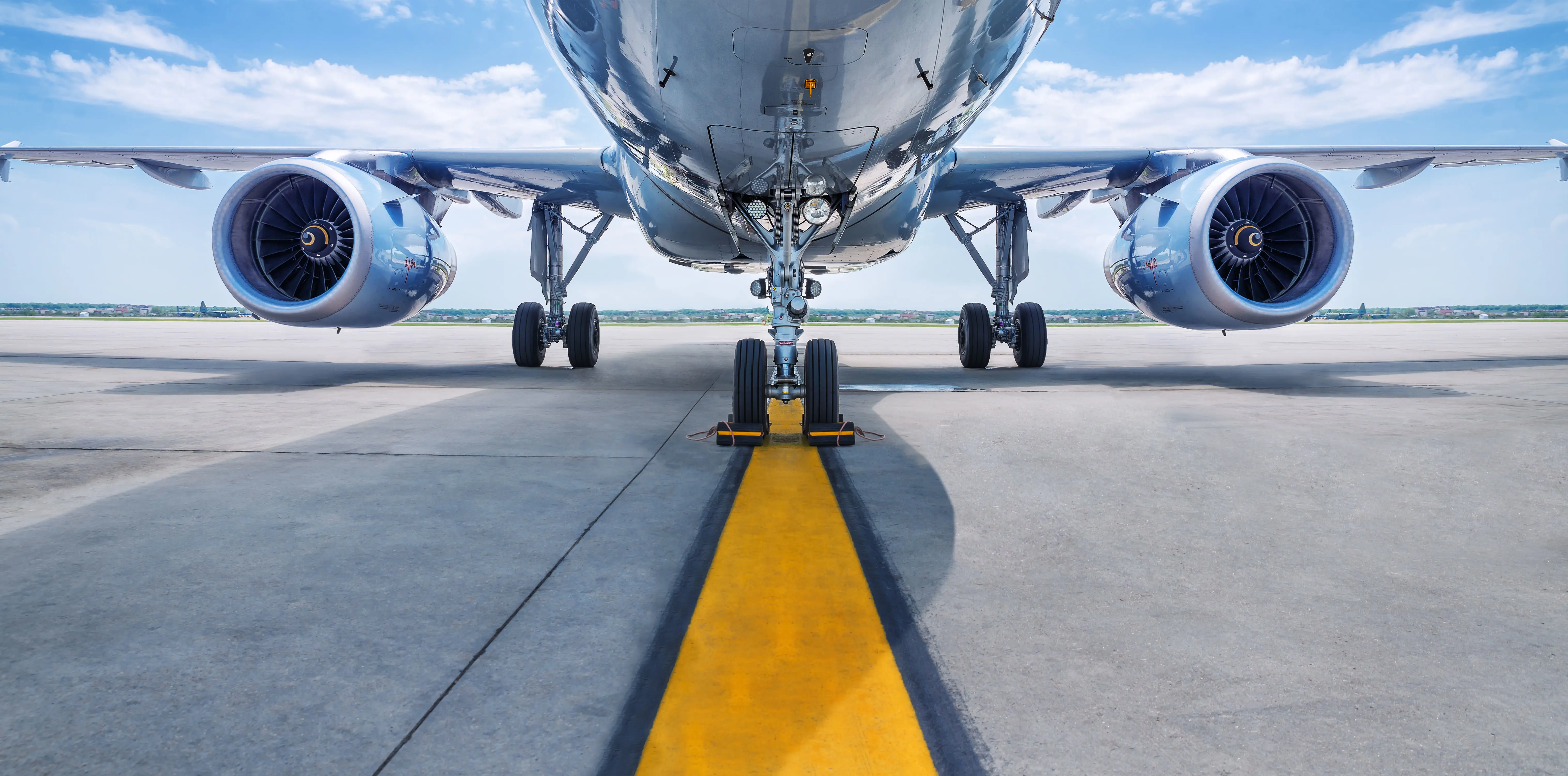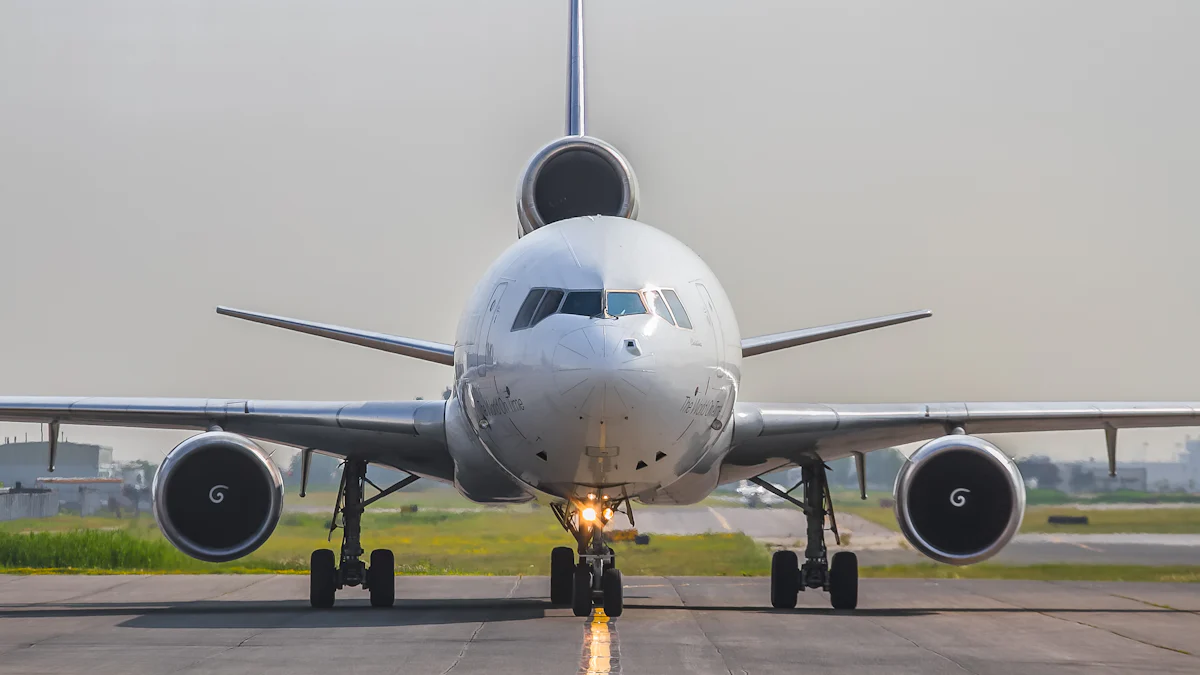2024 Global Air Freight Industry Review: Challenges and Resilience

The global air freight sector in 2024 reflects a dynamic interplay of growth and complexity. Demand for rapid transportation continues to surge, fueled by the expansion of e-commerce and persistent constraints in ocean shipping. According to recent data, global air freight volumes are projected to reach 62 million tonnes this year, with market size expected to grow from $257.44 billion in 2023 to $278.43 billion in 2024. Despite geopolitical tensions and economic uncertainties, the air cargo industry demonstrates remarkable resilience, adapting to disruptions while maintaining its critical role in global supply chains.
Current Market Trends in Global Air Freight

Air Cargo Growth and Demand Patterns
The global air cargo industry in 2024 is experiencing steady growth, driven by rising demand for faster transportation solutions. Air cargo volumes are projected to reach 62 million tonnes this year, reflecting the sector's critical role in global trade. This growth is fueled by the increasing reliance on e-commerce and the need for efficient supply chain operations. Despite challenges such as capacity constraints and geopolitical tensions, airfreight traffic continues to expand, showcasing the industry's resilience.
Air cargo demand has surged due to the limitations of ocean shipping and the growing preference for time-sensitive deliveries. The Asia-Pacific region leads this growth, with airlines reporting a 13.4% year-on-year increase in demand. North America and Europe also contribute significantly, with demand rising by 9.5% and 7.6%, respectively. These figures highlight the strong demand growth across key regions, underscoring the importance of airfreight in meeting global trade needs.
Regional Variations in Global Air Cargo Performance
Regional performance in the global air cargo market reveals notable differences. Asia-Pacific remains the dominant player, with a remarkable 17.8% year-on-year growth in air cargo demand. This region benefits from its position as a hub for major trade lanes, including Asia-Europe and Asia-North America routes, which recorded increases of 20.3% and 12.8%, respectively. Intra-Asian flows also saw a significant rise of 21%, reflecting the region's robust intra-regional trade activity.
Latin America experienced the highest year-on-year growth among all regions, with a 20.9% increase in air cargo demand. The Middle East followed closely, reporting a 10.1% rise, driven by strong performance on corridors such as Middle East-Europe. In contrast, Africa recorded the smallest growth, with a modest 1.7% increase in demand. These variations highlight the diverse dynamics shaping the global air freight market and the unique opportunities present in each region.
Key Industry Segments Driving Airfreight Expansion
Several industry segments are propelling the expansion of airfreight. E-commerce continues to be a major driver, with online retailers relying heavily on air cargo to meet consumer expectations for fast delivery. The pharmaceutical and healthcare sectors also play a crucial role, requiring temperature-controlled logistics solutions for the transportation of sensitive goods. Additionally, the automotive and electronics industries contribute significantly, leveraging airfreight for the rapid movement of high-value components.
The general air freight market benefits from the increasing demand for specialized cargo services. Perishable goods, such as fresh produce and seafood, rely on airfreight for timely delivery to global markets. High-value goods, including luxury items and technology products, further drive demand for secure and efficient air cargo solutions. These segments underscore the versatility of the airfreight industry and its ability to adapt to diverse market needs.
Challenges Impacting the Global Air Freight Industry in 2024
Geopolitical Tensions and Trade Barriers
Geopolitical tensions continue to create significant challenges for the global air freight industry. Ongoing conflicts and trade disputes disrupt established trade routes, forcing companies to adapt their supply chain strategies. The Red Sea crisis, for instance, has heightened security concerns, impacting maritime transport and increasing reliance on air cargo as an alternative. However, this shift places additional pressure on global cargo capacity, which remains constrained due to limited widebody freighters and reduced belly cargo availability on passenger flights.
Trade barriers further complicate the situation. Tariffs and sanctions imposed by governments hinder the smooth flow of goods across borders. These restrictions not only delay shipments but also increase costs for businesses relying on airfreight. The air cargo sector must navigate these obstacles while maintaining its critical role in global trade. Despite these hurdles, the industry's ability to manage disruptions throughout the year demonstrates its resilience and adaptability.
Economic Pressures and Rising Costs
Economic pressures weigh heavily on the air freight industry in 2024. Rising fuel prices, labor shortages, and inflation contribute to escalating operational costs. According to industry reports, 70% of local air traders anticipate higher air freight prices in the latter half of the year due to security issues in the Red Sea region. These cost increases challenge the profitability of air cargo operations, particularly for small and medium-sized enterprises.
Shippers and freight forwarders face additional logistics challenges as they strive to optimize performance while managing expenses. The need for efficient supply chain solutions becomes paramount as businesses seek to balance cost-effectiveness with reliability. Despite these economic pressures, the air cargo market has shown remarkable efficiency in handling disruptions and maintaining stable rates. This capability underscores the industry's commitment to delivering value to its customers.
Sustainability and Environmental Challenges
Sustainability remains a pressing concern for the air freight industry. The sector faces mounting pressure to reduce its environmental impact while meeting growing demand. Carbon emissions from air cargo operations contribute significantly to global greenhouse gas levels, prompting calls for greener practices. Airlines are investing in fuel-efficient aircraft and exploring alternative energy sources to address these concerns.
E-commerce growth adds another layer of complexity. The surge in online shopping drives demand for rapid transportation, increasing the frequency of flights and, consequently, emissions. Balancing the need for speed with environmental responsibility poses a significant challenge for the industry. Stakeholders must prioritize sustainable practices to align with global climate goals and ensure long-term viability.
The industry's efforts to enhance sustainability reflect its commitment to addressing environmental challenges. By adopting innovative technologies and collaborating with partners across the supply chain, air cargo operators can reduce their carbon footprint and contribute to a more sustainable future.
Resilience Factors Supporting the Air Cargo Industry

Technological Advancements in Airfreight Operations
The air cargo industry has embraced cutting-edge technologies to enhance operational efficiency and reliability. Real-time tracking systems, powered by the Internet of Things (IoT), provide end-to-end visibility of shipments, ensuring transparency throughout the supply chain. These advancements allow stakeholders to monitor cargo conditions, predict delays, and optimize routes, reducing transit times and costs.
Automation plays a pivotal role in streamlining processes. Automated cargo handling systems at airports improve loading and unloading efficiency, minimizing human error. Artificial intelligence (AI) further enhances operations by enabling predictive maintenance for aircraft, reducing downtime and ensuring safety. Blockchain technology has also emerged as a game-changer, offering secure and tamper-proof documentation for customs clearance and payment processes.
The integration of big data analytics has revolutionized decision-making in airfreight. Airlines and logistics providers analyze vast datasets to forecast demand, allocate resources, and optimize fleet utilization. These technological advancements not only improve service quality but also strengthen the industry's resilience against disruptions.
Market Adaptability and Strategic Collaborations
Adaptability remains a cornerstone of the air cargo sector's success. Companies continuously adjust to shifting market dynamics, such as fluctuating demand and geopolitical challenges. By diversifying their service offerings, airfreight operators cater to various industries, including pharmaceuticals, automotive, and electronics. This flexibility ensures steady revenue streams even during economic downturns.
Strategic collaborations further bolster the industry's resilience. Partnerships between airlines, freight forwarders, and technology providers enable seamless integration of services. For instance, alliances with e-commerce platforms facilitate efficient handling of e-commerce shipments, meeting the growing demand for rapid delivery. Collaborative efforts also extend to sustainability initiatives, where stakeholders work together to reduce carbon emissions and adopt greener practices.
The establishment of regional hubs and intermodal transport networks exemplifies the industry's adaptability. These hubs optimize cargo flow by connecting airfreight with other modes of transportation, such as rail and road. This approach enhances efficiency and expands market reach, ensuring the industry's ability to thrive in a competitive landscape.
The Role of E-commerce in Driving Air Cargo Demand
E-commerce has become a driving force behind the growth of air cargo. The surge in online shopping has created an unprecedented demand for fast and reliable delivery services. Consumers expect quick shipping times, prompting retailers to rely on airfreight for time-sensitive deliveries. This trend has significantly increased the volume of e-commerce shipments handled by the industry.
Air cargo operators have adapted to this demand by investing in infrastructure and technology tailored to e-commerce needs. Dedicated e-commerce facilities at airports streamline sorting and distribution processes, ensuring timely deliveries. Advanced tracking systems provide real-time updates to customers, enhancing their shopping experience and building trust in the supply chain.
The rise of cross-border e-commerce has further amplified the industry's importance. International online sales require efficient logistics solutions to navigate customs and regulatory complexities. Airfreight offers the speed and reliability needed to meet these challenges, solidifying its role as a critical enabler of global e-commerce.
The industry's ability to align with e-commerce trends underscores its resilience. By leveraging technology and fostering partnerships, air cargo continues to adapt to evolving consumer expectations, securing its position as a vital component of the modern economy.
Future Outlook for Global Air Cargo
Opportunities for Air Cargo Growth and Innovation
The air cargo industry stands at the forefront of growth opportunities, driven by the increasing demand for fast and reliable shipping solutions. The rise of e-commerce continues to fuel this expansion, as businesses rely on air freight to meet tight delivery schedules and transport high-value goods. The sector has become indispensable in global supply chains, ensuring business continuity and customer satisfaction.
Technological advancements present significant opportunities for innovation. Blockchain technology enhances security and transparency in supply chain operations, while artificial intelligence (AI) optimizes route planning and resource allocation. The Internet of Things (IoT) enables real-time tracking, providing end-to-end visibility for shipments. These innovations not only improve operational efficiency but also strengthen customer trust in air freight services.
The industry's ability to adapt to changing market demands positions it for sustained growth. By investing in advanced technologies and infrastructure, air cargo operators can capitalize on emerging trends and maintain their competitive edge. The projected market size of $162.39 billion by 2031, as forecasted by SkyQuest, underscores the sector's potential for long-term expansion.
Potential Shifts in Airfreight Industry Dynamics
The airfreight industry is poised for transformative changes that could reshape its dynamics. E-commerce growth has already altered traditional logistics models, with a greater emphasis on speed and reliability. This shift has prompted air cargo operators to optimize their networks and invest in dedicated facilities for handling e-commerce shipments.
Regional trade patterns may also evolve, influenced by geopolitical developments and economic policies. Emerging markets in Asia, Africa, and Latin America are likely to play a more prominent role in global air cargo flows. These regions offer untapped potential for growth, driven by increasing industrialization and cross-border trade.
Sustainability will remain a critical factor in shaping industry dynamics. Airlines are under pressure to reduce carbon emissions and adopt greener practices. The integration of fuel-efficient aircraft and alternative energy sources will become essential for meeting environmental goals. These changes will require collaboration among stakeholders to ensure a sustainable and resilient future for air freight.
Preparing for Future Disruptions in Global Air Freight
The air cargo industry must proactively prepare for potential disruptions to maintain stability and reliability. Geopolitical tensions, economic fluctuations, and natural disasters pose ongoing risks to global supply chains. Operators need robust contingency plans to address these challenges and minimize their impact on operations.
Investing in technology is key to enhancing resilience. Predictive analytics can help identify potential disruptions before they occur, enabling companies to take preventive measures. Automation and AI-driven systems streamline processes, reducing dependency on manual labor and mitigating risks associated with workforce shortages.
Diversification of supply chain networks is another critical strategy. Establishing regional hubs and intermodal transport options ensures flexibility in routing shipments during disruptions. Collaboration with partners across the logistics ecosystem strengthens the industry's ability to adapt to unforeseen challenges.
The lessons learned from past crises, such as the pandemic, highlight the importance of agility and innovation. By embracing these principles, the air cargo sector can navigate future uncertainties and continue to thrive in an ever-changing global landscape.
The global air freight industry in 2024 reflects a delicate balance between challenges and resilience. Technological advancements, such as artificial intelligence and automation, are transforming operations and driving efficiency. E-commerce continues to fuel demand, while sustainability emerges as a critical priority. Stakeholders must embrace agility and innovation to adapt to market shifts and disruptions. By prioritizing collaboration and investing in digitalization, the industry can unlock new opportunities. The path forward demands a commitment to operational excellence and environmental responsibility, ensuring long-term growth and relevance in an evolving global landscape.
See Also
Discovering Innovations in Sea Freight Logistics for 2024
Understanding Current Trends in Logistics Risk Management
Get Prepared: New Transport Technologies Shaping Supply Chains
